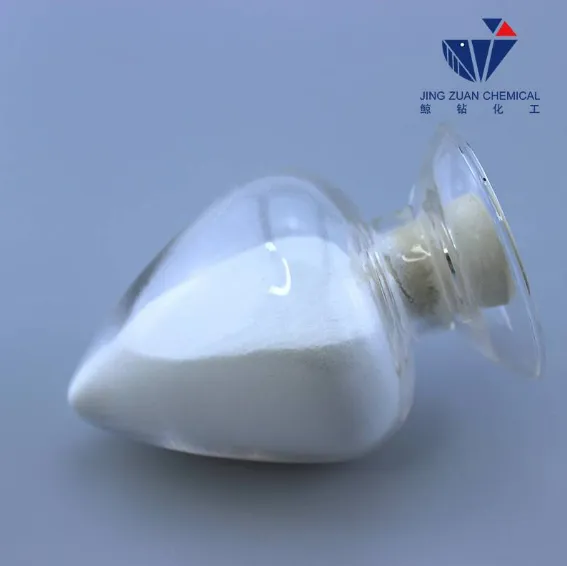
Mai . 16, 2025 17:47 Yn ôl i'r rhestr
The Widespread Application of Redispersible Powder in Construction and Building Materials
As an important modified additive, redispersible powder has been increasingly widely used in the fields of construction and building materials. Its unique performance enables it to significantly improve the performance of cement, mortar, and other building materials, thereby meeting the higher requirements of modern architecture for durability, construction, and environmental friendliness. This article will explore the specific applications of redispersible powder in the fields of architecture and building materials, and elaborate on the positive impacts it brings.

Reliable powder plays a key role in cement mortar
By incorporating redispersible polymer powder, the bonding strength, crack resistance, and wear resistance of cement mortar can be significantly improved. Reliable powder forms a polymer film during the hydration process of cement, filling the gaps between cement particles and enhancing the connection between particles. This effectively reduces the early shrinkage of mortar, thereby reducing the occurrence of cracks. In addition, the flexibility of the polymer endows the mortar with better impact resistance and extends its service life. Common applications include tile adhesives, self leveling mortar, exterior wall insulation mortar, etc. In these applications, the addition of redispersible powder ensures good bonding strength and durability, avoiding problems such as hollowing and peeling.
Reliable powder is also widely used in gypsum based materials
Gypsum based materials have advantages such as light weight and good thermal insulation performance, but they have shortcomings in strength and water resistance. The addition of RDP powder can effectively compensate for these deficiencies. It can improve the flexural and compressive strength of gypsum based materials, making them more sturdy and durable. More importantly, redispersible powder can form a hydrophobic film on the surface of gypsum based materials, reducing their water absorption rate and thus improving their water resistance. This enables gypsum based materials to be applied in environments with high humidity, expanding their application range, such as indoor decorative putty, gypsum board sealant, etc.
Reliable powder still plays an important role in special building materials
For example, in self-healing concrete, redispersible latex powder can be encapsulated in microcapsules inside the concrete. When cracks appear in concrete, microcapsules rupture, releasing redispersible powder that reacts with water to fill the cracks and achieve self-healing function. This can significantly extend the service life of concrete structures and reduce maintenance costs. In waterproof mortar, redispersible powder can improve the compactness and hydrophobicity of the mortar, making it have excellent waterproof performance. These applications demonstrate the enormous potential of redispersible powder in enhancing the functionality of building materials.
In summary, VAE powder has been widely used in the fields of construction and building materials due to its unique performance. It can not only improve the strength, durability, and crack resistance of traditional building materials, but also endow them with new functions to meet the demands of modern architecture for high performance, environmental protection, and sustainability. With the continuous development of construction technology, the application prospects of redispersible powder will be even broader, making greater contributions to the progress of the construction industry.
redispersible powder FAQs
What is the main role of redispersible powder in building materials?
Reliable powders (such as VAE and acrylic esters) are mainly used as modifiers in building materials, which can significantly improve the bonding strength, flexibility, and cracking resistance of mortar. It can also improve workability, wear resistance, and water resistance, and is commonly used in tile adhesives, exterior wall insulation systems, self leveling mortar, and waterproof coatings.
How does redispersible powder work? What is its redispersion mechanism?
Redispersible powder is made of polymer lotion by spray drying, and can be redispersible into stable lotion when it meets water. Its polymer particles form a flexible film during the solidification process of mortar, filling pores and enhancing the cohesion of cement-based materials, thereby improving adhesion and impact resistance.
What is the difference between redispersible powder and regular latex powder?
Ordinary latex powder (such as PVA) may not form stable lotion after dissolving, while redispersible powder can ensure the stability of redispersible lotion after special modification (such as protective colloid treatment). In addition, redispersible powders typically have better alkali resistance and weather resistance, making them suitable for cement-based systems.
What is the typical amount of redispersible powder added in dry mix mortar?
The amount of addition varies depending on the application: typically 1% to 3% for ceramic tile adhesive, 2% to 5% for exterior wall insulation mortar, and 0.5% to 2% for self leveling mortar. Excess may affect strength, and the ratio needs to be optimized through experiments.
What are the precautions for storage and construction of redispersible powder?
Storage: It should be sealed and moisture-proof, avoiding high temperatures (recommended<30 ℃), and the shelf life is usually 6-12 months.
Construction: Ensure that the mortar is thoroughly mixed to evenly disperse the redispersible powder; Avoid construction at low temperatures (<5 ℃) or on rainy days to avoid affecting the film-forming effect.
-
Unlocking the Benefits of HPMC Products: A Gateway to Versatile Applications
NewyddionAug.07,2025
-
Tile Bonding Cellulose: The Key to Superior Adhesion and Durability
NewyddionAug.07,2025
-
Hydroxypropyl Methylcellulose Powder: The Versatile Component in Modern Pharmaceuticals
NewyddionAug.07,2025
-
Hydroxyethyl Cellulose: The Versatile Solution for Various Industries
NewyddionAug.07,2025
-
Hydroxyethyl Cellulose (HEC): The Versatile Polymer for Various Applications
NewyddionAug.07,2025
-
The Ultimate Guide to Mortar Bonding Agent
NewyddionAug.06,2025







